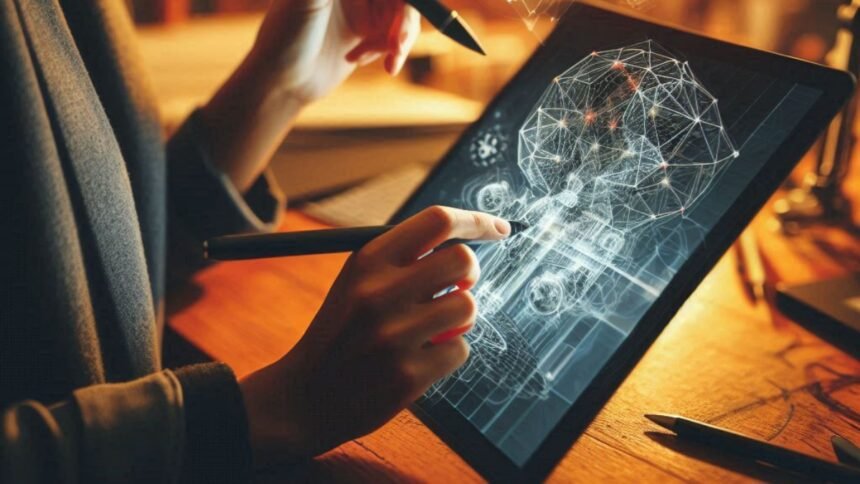In today’s fast-paced market, companies leverage automation to enhance product design, streamline workflows, and stay competitive. Automation in product design empowers teams to move from concept to prototype with incredible speed and precision, reducing manual tasks and minimizing errors. With advanced tools like automated CAD, AI-driven simulations, and generative design, designers can explore multiple iterations, test structural integrity, and optimize materials within a digital environment. This technology-driven approach accelerates the design process and enables better decision-making, allowing designers to focus on innovation and create efficient and sustainable products. As automation evolves, understanding its potential to transform product design is essential for businesses looking to lead in a dynamic, demanding marketplace.
The field of product design is experiencing a profound transformation, driven by significant advancements in automation design software. These technological innovations enhance efficiency and precision and fundamentally reshape how design objectives are accomplished across various industries. By replacing manual, repetitive tasks with automated solutions, design professionals can devote more time and resources to strategic planning and creativity, thus delivering higher-value products to market at an accelerated pace.
Implementing automation in product design is more than a mere operational efficiency exercise; it’s a strategic endeavor that significantly cuts costs, enhances innovation, and provides companies with a tangible competitive advantage. As more industry leaders recognize the far-reaching benefits of automation, the transition toward automated design processes gains momentum. This shift positions businesses to adapt to volatile market dynamics and ever-evolving consumer expectations quickly, reshaping the influence design teams wield over an organization’s strategic success.
The Growing Need for Automation in Design
Today’s fast-paced business environment demands that companies deliver high-quality products more rapidly and do so at lower costs. Design automation becomes a strategic ally in this endeavor by providing the necessary tools and technologies to streamline and simplify the complex processes involved in product design. This shift is not merely about speeding up production; it’s about maintaining, if not enhancing, quality and innovation as industries adapt to ever-evolving technological landscapes. By integrating automation, organizations are equipping themselves with the agility required to stay competitive, adapt to technological advancements, and foster a working culture that continually pushes the limits of what is possible in design.
The Basics of Design Automation
Design automation involves utilizing technology to perform repetitive or predictable tasks through programmed processes. This concept, though only partially new, has gained significant traction with the advent of more sophisticated software solutions. Automation reduces the manual workload placed on designers while ensuring high consistency and accuracy in outputs. Whether it involves generating design components, conducting various simulations, or optimizing overall workflows, automation’s scope is broad. Mastering these basics helps unlock new levels of operational productivity and accuracy, setting the stage for innovative breakthroughs in product design that were previously unattainable.
Benefits of Integrating Automation in Product Design
Automation in design processes can lead to cost efficiency, improved accuracy, time-saving, and innovative solutions. It reduces manual labor and errors, realigning resources toward strategic initiatives. Automation ensures precise specifications, reducing defects and costly rework. It also accelerates market launches, enhancing business agility. Furthermore, automation fosters an environment for testing new ideas, leading to better-performing products and tailored designs.
Types of Design Automation Tools
Various tools facilitate design automation, each tailored to address different facets of the design process. Popular among these tools are CAD software, parametric modeling systems, and comprehensive process automation tools. Each tool offers unique benefits and functionalities, enabling designers to automate tasks ranging from initial drafting to executing complex simulations. Selecting the correct blend of tools is critical for achieving the desired design outcomes and optimizing workflow efficiencies. Furthermore, these tools must integrate seamlessly with existing systems and processes to yield the most beneficial outcomes, ensuring that automation initiatives are efficient and impactful.
Overcoming Challenges in Design Automation
Although the benefits of design automation are manifold, the transition is challenging. Initial setup costs can be daunting, and a significant learning curve is often associated with understanding and adopting new technologies. Moreover, integrating automated systems within existing workflows can pose additional complexities, usually requiring substantial planning and execution effort. A successful transition to computerized processes hinges on robust change management strategies. Clear communication and effective stakeholder engagement ensure everyone within the organization is aligned with the broader automation goals, facilitating smoother transitions and long-term success.
Future Trends in Design Automation
The future of design automation is promising, with emerging technologies like artificial intelligence and machine learning poised to unlock even greater possibilities. These advancements could enable more complex design tasks to be carried out with unprecedented efficiency, offer predictive analytics to designers, and provide sophisticated optimization tools for product development. Keeping abreast of these evolving trends is crucial for companies committed to maintaining a competitive edge and leveraging new technologies for strategic advantages. Organizations that stay informed and adaptive will be best positioned to implement these technologies effectively and continue leading their industries in innovation and productivity.
Conclusion: Harnessing Automation for Success
Automation in product design transcends being a mere tool. It is a catalyst for operational excellence and a driver of innovation. By leveraging these advanced technologies, businesses can enhance productivity, streamline processes, and secure a competitive advantage. Embracing automation is essential for navigating the complexities of contemporary design processes and fully exploiting the opportunities presented in today’s dynamic market landscape. Companies that harness the full potential of automation are well-equipped to lead their markets, setting new standards for what is achievable and redefining industry best practices.

